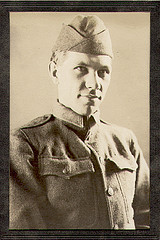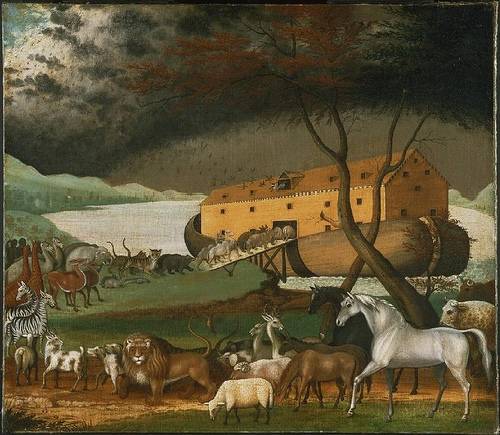paraskavedekatriaphobia
n. fear of Friday the 13th
Language
Giving Pause

Harold Ross personally edited every issue of the New Yorker between 1925 and 1951. Unfortunately, he was a fiend for commas, peppering every sentence until all possible ambiguity was removed. An example from 1948:
“When I read, the other day, in the suburban-news section of a Boston newspaper, of the death of Mrs. Abigail Richardson Sawyer (as I shall call her), I was, for the moment, incredulous, for I had always thought of her as one of nature’s indestructibles.”
His writers hated this. James Thurber revised Wordsworth:
She lived, alone, and few could know
When Lucy ceased to be,
But, she is in her grave, and, oh,
The difference, to me.
And E.B White wrote, “Commas in the New Yorker fall with the precision of knives in a circus act, outlining the victim.”
But Ross was immovable. “We have carried editing to a very high degree of fussiness here,” he acknowledged to H.L. Mencken, “probably to a point approaching the ultimate. I don’t know how to get it under control.”
So on it went. A correspondent once asked Thurber why Ross had added the comma to the sentence “After dinner, the men went into the living-room.” Thurber responded, “This particular comma was Ross’s way of giving the men time to push back their chairs and stand up.”
In a Word
patrizate
v. to imitate one’s father
father-better
adj. surpassing one’s father
father-waur
adj. worse than one’s father
Lay of the Deserted Influenzaed
Doe, doe!
I shall dever see her bore!
Dever bore our feet shall rove
The beadows as of yore!
Dever bore with byrtle boughs
Her tresses shall I twide–
Dever bore her bellow voice
Bake bellody with bide!
Dever shall we lidger bore,
Abid the flow’rs at dood,
Dever shall we gaze at dight
Upon the tedtder bood!
Ho, doe, doe!
Those berry tibes have flowd,
Ad I shall dever see her bore,
By beautiful! by owd!
Ho, doe, doe!
I shall dever see her bore,
She will forget be id a bonth,
(Bost probably before)–
She will forget the byrtle boughs,
The flow’rs we plucked at dood,
Our beetigs by the tedtder stars.
Our gazigs at the bood.
Ad I shall dever see agaid
The Lily and the Rose;
The dabask cheek! the sdowy brow!
The perfect bouth ad dose!
Ho, doe, doe!
Those berry tibes have flowd –
Ad I shall dever see her bore,
By beautiful! by owd!!
— Henry Cholmondeley-Pennell, Puck on Pegasus, 1868
Lonely Words

What is gopher wood? Noah used it to build his ark, but there’s no other reference to it in the Bible.
Similarly, no one’s quite sure what a kankedort is. It appears in one passage in Chaucer’s Troilus and Criseyde:
Was Troilus nought in a kankedort,
That lay, and myghte whisprynge of hem here,
And thoughte, “O Lord, right now renneth my sort
Fully to deye, or han anon comfort!”
The Oxford English Dictionary defines it helplessly as an awkward situation or affair and says it’s “of unascertained etymology.”
See Hapax Legomenon.
Editorial License
Alexander III once wrote a warrant condemning a prisoner to transportation:
PARDON IMPOSSIBLE, TO BE SENT TO SIBERIA.
The man appealed to the czar’s wife, who transposed the comma:
PARDON, IMPOSSIBLE TO BE SENT TO SIBERIA.
The prisoner was released.
The actress Minnie Maddern Fiske once found this message attached to the mirror in her dressing room:
MARGARET ANGLIN SAYS MRS. FISKE IS THE BEST ACTRESS IN AMERICA.
She returned it to Anglin, who found she had added two commas:
MARGARET ANGLIN, SAYS MRS. FISKE, IS THE BEST ACTRESS IN AMERICA.
The Zealless Xylographer
(“Dedicated to the End of the Dictionary”)
A xylographer started to cross the sea
By means of a Xanthic Xebec;
But, alas! he sighed for the Zuyder Zee,
And feared he was in for a wreck.
He tried to smile, but all in vain,
Because of a Zygomatic pain;
And as for singing, his cheeriest tone
Reminded him of a Xylophone–
Or else, when the pain would sharper grow,
His notes were as keen as a Zuffolo.
And so it is likely he did not find
On board Xenodochy to his mind.
The fare was poor, and he was sure
Xerofphagy he could not endure;
Zoophagous surely he was, I aver,
This dainty and starving Xylographer.
Xylophagous truly he could not be–
No sickly vegetarian he!
He’d have blubbered like any old Zeuglodon
Had Xerophthalmia not come on.
And the end of it was he never again
In a Xanthic Xebec went sailing the main.
— Mary Mapes Dodge, Poems and Verses, 1904
A Manner of Speaking

It’s said that when Christopher Wren completed St. Paul’s cathedral in 1708, Queen Anne told him his work was “awful, artificial, and amusing.”
He took this as a compliment — in those days these words meant awe-inspiring, artistic, and amazing.
In a Word
verbunkos
n. a dance performed to persuade people to enlist in the Hungarian army
A Man of Letters
“L E G on the Death of L X and R N S, Squire of the Coun T of S X”
In S X once there lived M N,
Who was Xceeding Y Y;
But with so much O B C T
It almost closed his I I.
When from his chair E would R I I,
U would have laughed to C
The awkwardness his fat did cause
To this old O D T.
But barring that E was so fat,
E was a right good fell O,
And had such horror of X S
U never saw him mell O.
N O O so red E did not like,
As that which wine will give,
So did S A to keep from drink
As long as E did live.
Two daughters fair this old man had,
Called Miss M A and L N,
Who, when the old chap took his E E,
Would try to T T the men.
Over the C C, these maids to please,
There came two gallants gay;
M A and L N ceased to T T,
And with them ran away.
These gallants did them so M U U,
And used such an M N C T
Of flattery, U must X Q Q
Their fugitive propensity.
The poor old man heaved many S I I
For frail M A and L N;
E called each gallant gay a rogue,
A rascal, and a villain.
And all with half an I might C
His gradual D K,
Till M T was his old arm-chair,
And E had passed away.
— William T. Dobson, Literary Frivolities, Fancies, Follies and Frolics, 1880
